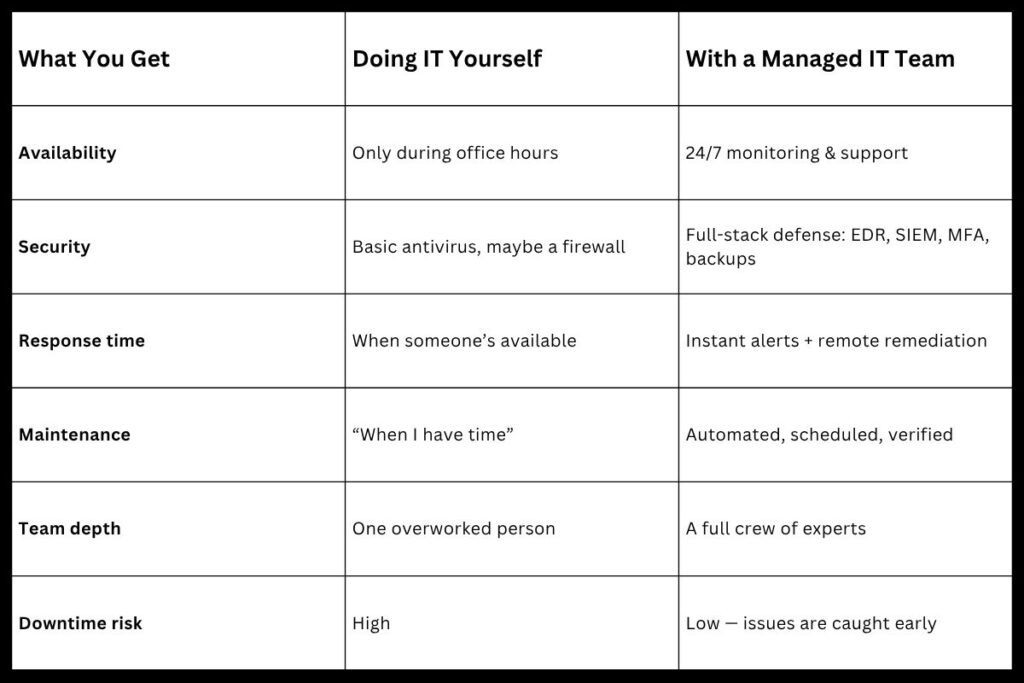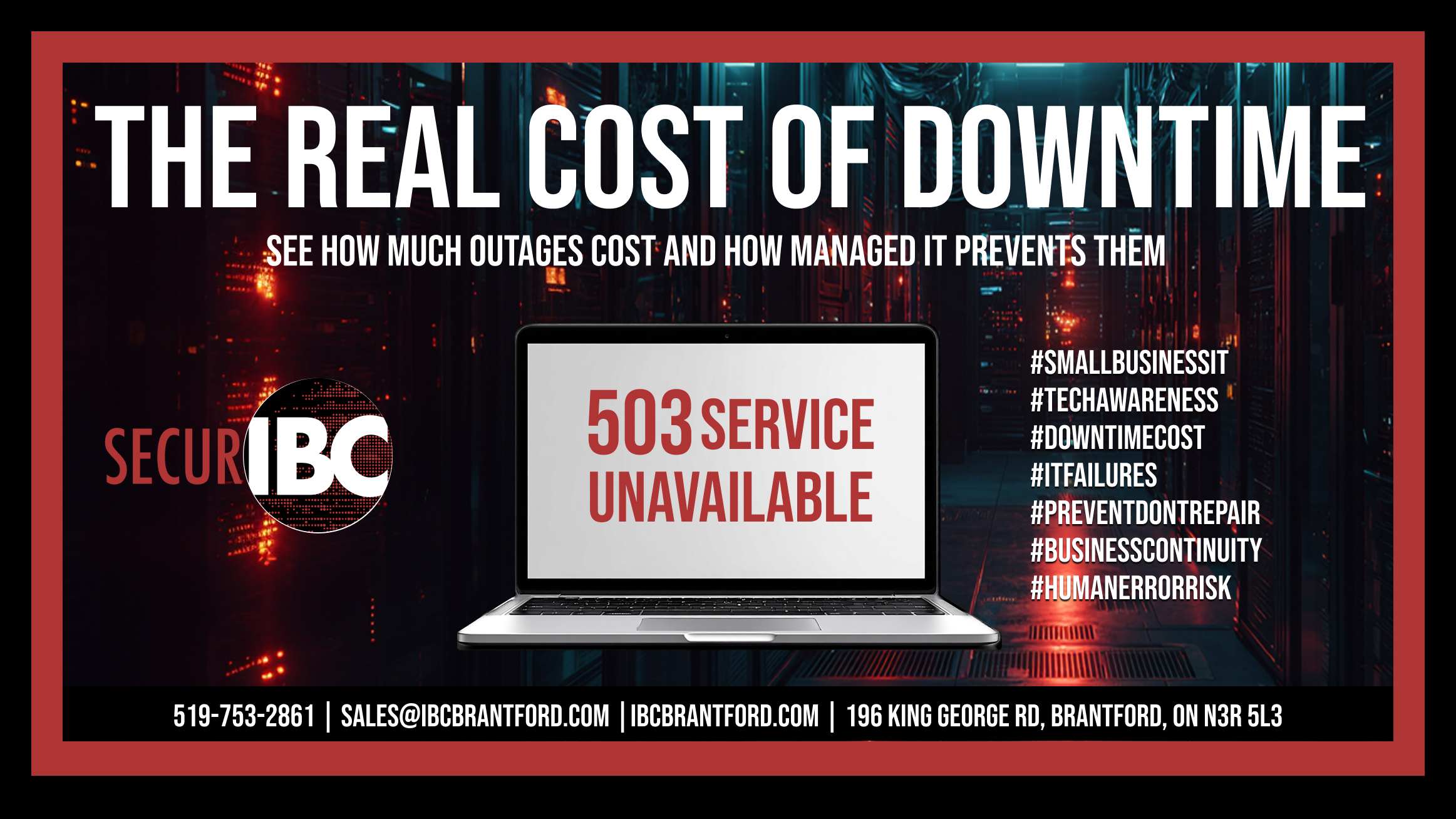Let’s be honest — most business owners wear too many hats. You’re managing clients, staff, schedules… and somehow, you’re also the IT person. Sound familiar?
It seems practical — until something breaks. And when it does, the cost isn’t just stress — it’s real money.
The Hidden Cost of “Doing IT Yourself”
Recent studies show the numbers are climbing fast:
- The average cost of a data breach in 2024 reached $4.88 million, up 10% from the previous year (IBM Cost of a Data Breach Report 2024)
- Recent ITIC data reveals that downtime has never been more expensive — over 90% of medium and large businesses report hourly losses surpassing $300,000.
- 68% of breaches still come from human error — phishing, weak passwords, and misconfigurations (Verizon DBIR 2024)
So, if your IT strategy is “call someone when it breaks,” you’re not saving money — you’re rolling dice with your business. You wouldn’t trust your accounting to “someone who’s good with Excel.” So why risk your entire IT system on guesswork?

What Happens When IT Goes Wrong
Downtime doesn’t just mean silence — it means missed sales, frustrated clients, and that awful moment when everyone’s standing around waiting for “the computer to work again.”
Then come the phishing emails, the lost passwords, the ransomware pop-ups demanding money in Bitcoin… it’s a nightmare that hits small businesses hardest.
A quick look at what you get when you stop going solo with IT

Why a Managed IT Team Just Makes Sense
- They’re watching your systems 24/7 so you can actually sleep.
- They patch, monitor, and test backups before disaster strikes.
- They give you predictable monthly costs (no more “surprise bills”).
- You get an entire team — not just one overwhelmed employee.
- And most importantly: they help you focus on growing your business, not fixing it.
What You Can Do Now
- Calculate the cost of downtime in your business — lost sales, payroll, wasted hours. You’ll be surprised how fast it adds up.
- Review your backup and recovery plan — when was the last time you actually tested restoring data?
- Train your team to spot phishing and password scams (they’re behind most breaches).
- Audit your cybersecurity stack — antivirus isn’t enough anymore; you need layered defense.
- Talk to an IT professional — even a quick consultation can reveal vulnerabilities you didn’t know existed.
A little prevention today saves a lot of panic tomorrow.
Takeaway
You don’t need to become an IT expert — you just need the right team in your corner. Because in 2025, “hoping nothing breaks” isn’t a strategy.
If you’re curious what that looks like in practice, take a look at our Managed IT Services





